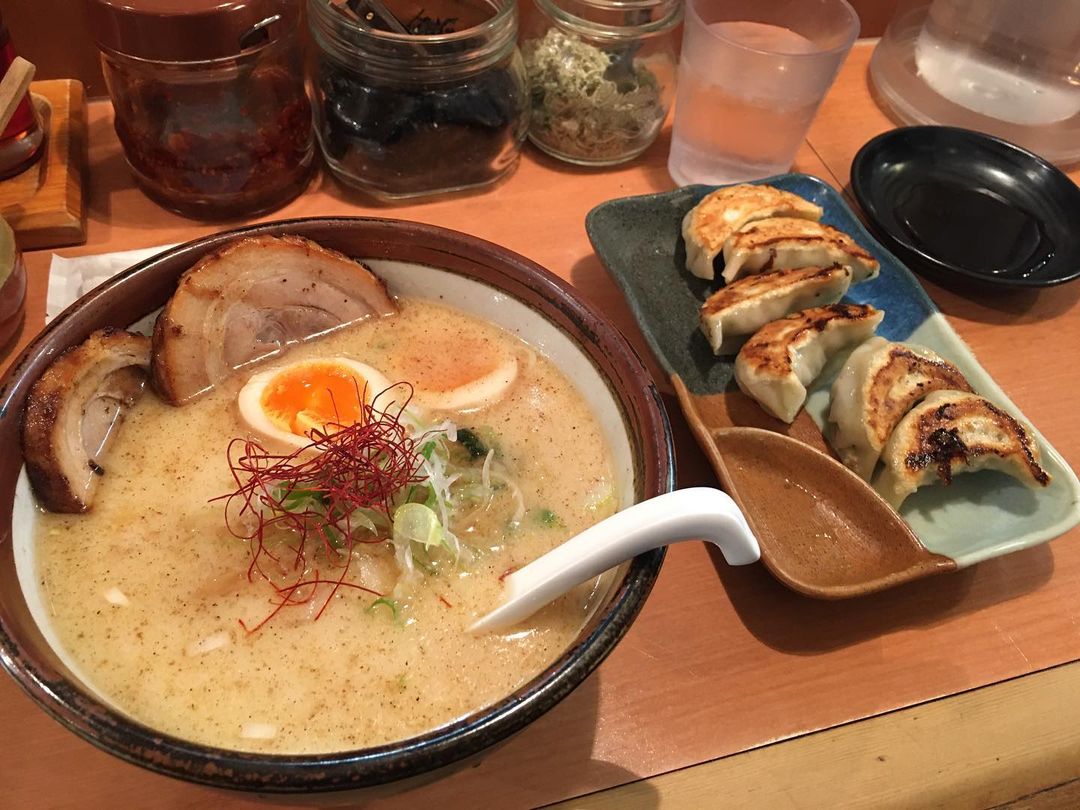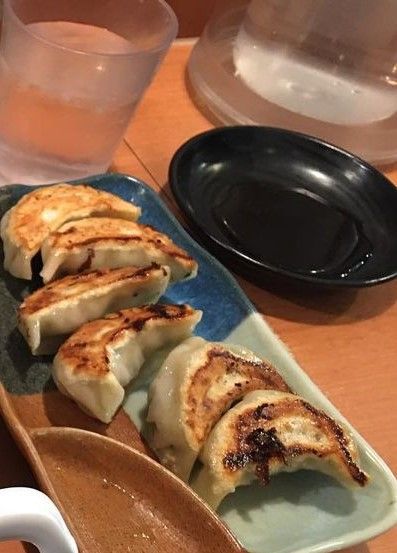Preparation for the great food adventure - Japanese eating etiquette
In preparation for the first free weekend of my stay, it would only be respectful to revise some Japanese table manners. Now don't panic about forgetting any of these rules but do try to keep them in mind as they will stop you from "losing face".

In preparation for the first free weekend of my stay, it would only be respectful to revise some Japanese table manners. Now don't panic about forgetting any of these rules but do try to keep them in mind as they will stop you from "losing face".

So let me set a scene for you, you are heading back to your accommodation after a long day of exploring Japan and suddenly you get hit with the smell of a rich porky broth coming from a small ramen restaurant like the one in the picture above. Ramen places like this one are typically seen as fast food restaurant because ramen is quick to cook and quick to eat but the key manners are still upheld while visiting fast-food restaurants.
For starters!
Before you even get any food, there are manners that you will be expected to follow and I am not just talking about your pleases and thank yous. Most restaurants provide you with three key things; a pair of chopsticks, a wet towel (oshibori) and a free glass of water or tea. Sometimes the chopsticks aren't directly given to you so in those cases, you will find the chopsticks in a box in front of you. So you are sitting down, you pick up a pair of disposable chopsticks in preparation for your lovely bowl of ramen and find that your chopsticks are just one stick? Typically disposable chopsticks need to be pulled apart to make the pair, but this is where the first manner comes in, don't rub disposable chopsticks together. It is seen to be rude to the restaurant staff as it implies you are trying to get rid of splinters and therefore implies that you are unhappy with your chopsticks. In the case of a ramen restaurant, you will get a disposable oshibori as well, the idea behind them is to clean your hands. But what do you do after you used them? Well, this is the next manner, which is after you used your oshibori, fold it neatly and place it away from your food.
Time for the main!

As you finish cleansing your hand, your food arrives, perfect! Now time for your pleases and thank yous. Before you eat, it is respectful to say "itadakimasu" ("I gratefully receive"). When it comes to noodles, you will come across the manner of slurping. Now you might think "come on, I know that slurping is bad manners, it isn't anything new". Well, it's actually the opposite in Japan as it is seen to respectful to the chef if you slurp your noodle as it is considered evidence of you enjoying the meal. The one thing you might want to watch out for when eating things like ramen is the noodles falling back into the broth/soup. It is common to follow the noodles with the spoon to catch anything that drops. But the other main purpose of the spoon is to drink the broth, although it is okay to lift the bowl to your mouth and drink from it directly.
It is common to see people lifting small bowls as it is a good manner as it helps with eating things like rice and stops food from dropping on the table. One manner people forget about is when eating from shared dishes, you should use dedicated serving chopsticks or if there isn't any then you should use the opposite end of your chopsticks when moving food around. But wait, to use serving chopsticks, you are going to need to put down your chopsticks so where do you put them? It would seem natural to put them across the edge of your bowl but that is bad manners. This is where chopstick stand comes in. But they aren't common in informal places so either rest them on the wrap they came in or rest them on an edge of the tray. As we are talking about chopstick etiquette, let's run through some quick rules:
- If you want to talk to someone, put down your chopsticks
- Never point your chopsticks at anyone, it is seen to be same as pointing your finger at someone.
- Don't use your chopsticks to push around dishes on the table.
- Don't stab food with your chopsticks, there is no reason to harpoon a piece of squid like it's the Kraken.
- Do not pass food from your chopsticks to someone's chopsticks.
- Don't stir your food around with your chopsticks.
Most of these rules apply to most dishes but there is one rule that is specific to rice which is "never leaves your chopsticks upright in a bowl of rice". It might seem like an odd rule to have as who would do that? Well, the Japanese do it as a funeral custom where they leave a bowl of white rice with a pair of chopsticks standing upright in it as an offering to the deceased. Some people also say that upright chopsticks invoke the image of burning incense at Buddhist funerals. If I was going to write a list of rules that all Westerners need to learn before coming to Japan, this rule is high up on the list. But apart from it being really disrespectful, why I am so serious about it? Well, there is a story about a British Navy admiral who was visiting Japan and was invited to dinner with a group of very important Japanese individuals. So midway through the meal, the admiral realised he need to go to the toilet, now not knowing where to put his chopsticks, he stuck them upright into his rice bowl before leaving the table. About five minutes later, the admiral heard someone urgently knocking on his cubicle door, so when he shouted out "who's there?" It turned out that the whole dinner party had gone looking for him as they were concerned for his life.
So why they were concerned? Well, it turns out that samurai used to do a similar thing before committing seppuku. Therefore it is understandable that they were concerned and I am quite serious, especially as I know some of the people that read these blogs have had meals with Japanese clients before and I am not worried about them committing seppuku but more worried about them losing face in front of their clients.

Some of you may know that I don't eat sushi but there are a couple of manners which come with eating sushi. The first one that comes to mind is don't overdo the soy sauce. If you look at the picture above, you might notice there is a small black dish which is for dripping sauce and in this case, soy sauce. In Japan, leaving a puddle of soy sauce is considered as bad manners so the trick to pour a small amount and only add more when you need it. There is another manner related to soy sauce which is don't pour soy sauce over cooked white rice. To be honest, it is common practice to do add soy sauce like that in the west but in Japan, it is seen as ruining the beauty of the dish. When eating sushi, eat it in one as it can be seen as disrespectful to the chef if you attempt to separate the beautifully prepared sushi in two.
Finally dessert!
After finishing your meal, it is polite to return all your dishes to how they were at the start of the meal. This includes replacing the lids on dishes and putting your chopsticks back on their chopstick stand. When it comes to paying the bill, it will be presented face down either as you receive the meal or after you have finished eating then you will be expected to bring your bill to the cashier near the exit when leaving. In terms of who should pay, traditionally it is the person who invited everyone, should be the one to pay.
Conclusion:
The past three blogs have been really short but I have been really busy with work and other things. Although, with the change of my SIEM shifts, I will be freer in the next few months so expect the amount of content being produced to increase.
So, it is time to say a big thank you to everyone reading this week's blog. In terms of next week, I have a couple of ideas but I will have to wait and see how busy I get. So until next week, arigatou gozaimasu and sayōnara!
